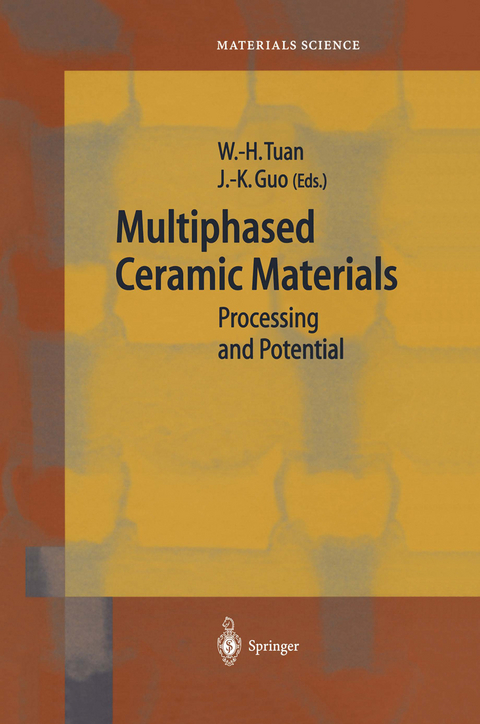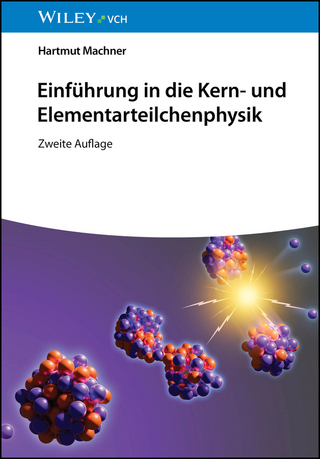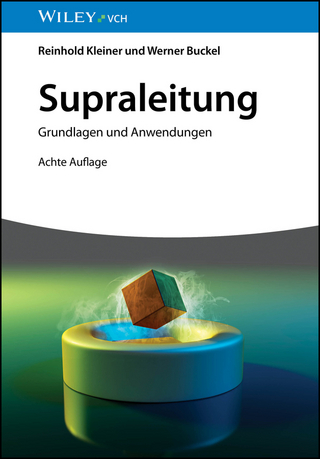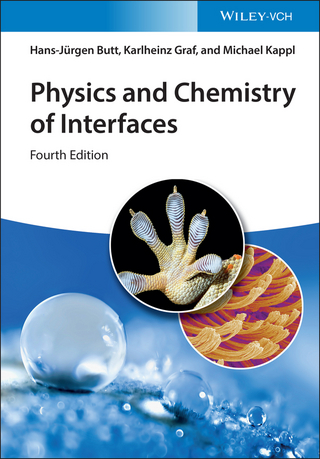
Multiphased Ceramic Materials
Springer Berlin (Verlag)
978-3-540-40516-0 (ISBN)
1 Multi-phase Materials.- 1.1 Introduction.- 1.2 The Basic Concept of Multi-phase Materials.- 1.3 The Need for Multi-phase Materials.- 1.4 Research Objectives.- References.- 2 New Concepts in the Design of Tough Ceramics.- 2.1 Introduction.- 2.2 Experiments.- 2.3 Results and Discussion.- 2.4 Conclusions.- Acknowledgement.- References.- 3 Interface Design of Tough Ceramics: Si3N4/BN Fibrous Monolithic Ceramic.- 3.1 Introduction.- 3.2 Measurement of Interfacial Toughness.- 3.3 Preparation of Si3N4/BN Fibrous Monolithic Ceramic.- 3.4 Conclusions.- Acknowledgement.- References.- 4 Microstructural Design : Si/SiC Composites Derived from Wood.- 4.1 Introduction.- 4.2 Experimental Work.- 4.3 Results and Discussion.- Acknowledgements.- References.- 5 Microstructure through Design in-situ Seeding Technique.- 5.1 Introduction.- 5.2 Experimental Work.- 5.3 Results and Discussion.- 5.4 Summary and Conclusions.- Acknowledgements.- References.- 6 Directional Solidification : ZrB2-LaB6 Eutectic Composites.- 6.1 Introduction.- 6.2 Experimental Work.- 6.3 Results and Discussion.- 6.4 Conclusions.- Acknowledgements.- References.- 7 A Co-Sedimentation Technique to Fabricate Continuous Gradient Composites.- 7.1 Introduction.- 7.2 Physical Modeling.- 7.3 Numerical Modeling.- 7.4 Results and Discussions.- 7.5 Validation of the Model.- 7.6 Conclusions.- Acknowledgements.- References.- 8 Spark Plasma Sintering : A Promising New Technique and its Mechanism.- 8.1 Introduction.- 8.2 Experimental Work.- 8.3 Results.- 8.4 Discussion.- 8.5 Conclusions.- Acknowledgments.- References.- 9 Pulsed Chemical Vapor Infiltration : Carbon/SiC Nanocomposites.- 9.1 Introduction.- 9.2 Experimental Work.- 9.3 Results and Discussion.- 9.4 Summary.- Acknowledgements.- References.- 10 Metal Oxidation Process : NiAl/Al2O3 Composites.- 10.1 Introduction.- 10.2 Experimental Work.- 10.3 Results and Discussion.- 10.4 Conclusions.- Acknowledgment.- References.- 11 Co-electroplating Nano-ceramic Particulates with Ni Layer.- 11.1 Introduction.- 11.2 Experimental Procedures.- 11.3 Results and Discussion.- 11.4 Conclusions.- References.- 12 Hot-Pressing Technique : SiC/AlN Composites.- 12.1 Introduction.- 12.2 Applications of Silicon Carbide Ceramics.- 12.3 SiC/AlN Particulate Composites.- 12.4 Conclusions.- Acknowledgements.- References.- 13 Nondestructive Evaluation of Strength and Residual Stress using Sphere Indentation.- 13.1 Introduction.- 13.2 Effect of Stress Gradient on Fracture.- 13.3 Critical Issues and Local Strength.- 13.4 Experimental Work.- 13.5 Proof Tests of Strength.- 13.6 Discussions and Conclusions.- Acknowledgements.- References.- 14 Machinable Ceramic Graded Composites.- 14.1 Introduction.- 14.2 Basic Design Principles.- 14.3 Machinable Graded Si3N4/h-BN Composite.- 14.4 Machinable Graded Al2O3/LaPO4 Composite.- 14.5 Conclusions.- References.- 15 Future of Structural Multi-phase Ceramics.- 15.1 Obstacles for the Applications of Ceramics.- 15.2 Novel Materials.- 15.3 Challenges.- References.
| Erscheint lt. Verlag | 14.6.2004 |
|---|---|
| Reihe/Serie | Springer Series in Materials Science |
| Zusatzinfo | XIII, 152 p. 78 illus. |
| Verlagsort | Berlin |
| Sprache | englisch |
| Maße | 155 x 235 mm |
| Gewicht | 435 g |
| Themenwelt | Naturwissenschaften ► Physik / Astronomie ► Atom- / Kern- / Molekularphysik |
| Naturwissenschaften ► Physik / Astronomie ► Festkörperphysik | |
| Naturwissenschaften ► Physik / Astronomie ► Thermodynamik | |
| Schlagworte | Al2O3 • Ceramics • composite • Design • Keramik • machine • microstructure • Model • Modeling • Nanocomposite • Oxidation • Processing • Sintering |
| ISBN-10 | 3-540-40516-X / 354040516X |
| ISBN-13 | 978-3-540-40516-0 / 9783540405160 |
| Zustand | Neuware |
| Informationen gemäß Produktsicherheitsverordnung (GPSR) | |
| Haben Sie eine Frage zum Produkt? |
aus dem Bereich


